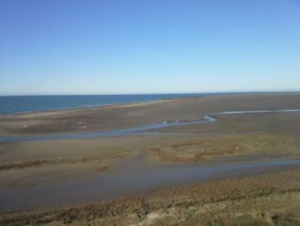This paper published in 2021 in the journal “IEEE Geoscience and Remote Sensing Letters” is now available online.
It is the result of a collaborative work between the University of Montpellier, Inria, Inrae, and the Luxembourg Institute of Science and Technology.
The teams have developed and validated an algorithm to estimate the bathymetry of wetlands or water reservoirs from the knowledge of some topo-bathymetric points measured on the ground or available in existing databases, and the knowledge of water surfaces, estimated by remote sensing, at several dates.
This algorithm can be applied to endoreic wetlands or water reservoirs, whose water surface varies strongly during the year (e.g. shallow wetlands subject to strong evaporation) and thus presents an interesting potential of application for several Mediterranean wetlands.
You can access to it on the Tour du Valat web documentary portal.
 Abstract:
Abstract:
For several decades, it becomes possible to delineate waterbodies and their dynamics from optical or radar images, that are now available at high spatial and temporal resolutions. We present here an interpolation approach that takes benefits from this waterbodies delineation in endorheic areas. It consists in computing isovalue contour lines to improve topography estimates classically obtained from measurement points only. The approach, based on a minimization problem, uses thin plate spline (TPS) interpolation functions, the coefficients of which are determined along with the unknown water level of each curve. Results obtained on a generated topography show that this approach, applied with three contour-line curves, yields a lower root mean square error (RMSE) using only one measurement point compared to the one obtained with nine points and the classical approach.
Bibliographical reference:
C. Delenne, J. -S. Bailly, A. Rousseau, R. Hostache and O. Boutron, “Endorheic Waterbodies Delineation From Remote Sensing as a Tool for Immersed Surface Topography,” in IEEE Geoscience and Remote Sensing Letters, vol. 19, pp. 1-5, 2022, Art no. 1502405, doi: 10.1109/LGRS.2021.3079718.